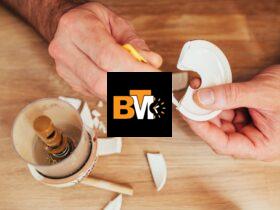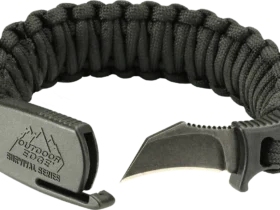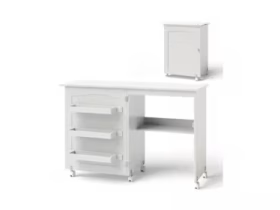Knitting is a cozy and creative hobby that many people love, and it all starts with the right tools. For beginners, knitting bamboo needles are the perfect place to begin. These gentle, natural needles make learning easier and more enjoyable. If you’re curious about why so many people love them—especially when starting out—this guide is just for you.
What Are Knitting Bamboo Needles?
Bamboo knitting needles are tools used in knitting that are made from real bamboo wood. Unlike metal or plastic, bamboo is a natural material that feels warm and smooth in your hands. It’s not too slippery and not too sticky—just the right texture for working with yarn. These needles come in many sizes, from tiny thin ones for delicate stitches to large chunky ones for thicker yarns.
One reason many people choose bamboo over other materials is because it’s lightweight yet strong. This means you can knit for hours without feeling tired. Natural bamboo knitting needles are also eco-friendly, making them a great choice if you care about the environment. Some are even polished with plant-based waxes to make the surface extra smooth.
Why Bamboo Needles Are Great for Beginners
If you’re just starting out with knitting, bamboo needles offer lots of helpful features. First, the slightly grippy surface of bamboo keeps the yarn from slipping off easily. This is really important when you’re learning and still getting used to how to move the yarn and needles.
Bamboo needles also tend to be quieter than metal ones. They don’t make the clicking sound that metal needles do, which can be distracting. This makes bamboo knitting tools perfect for relaxed, quiet evenings or for knitting in public places like libraries or classrooms.
The light weight of wooden bamboo needles helps beginners focus on their stitching without wrist strain. Since the needles are less slippery, your stitches stay in place better, reducing mistakes. Many beginner knitters also find bamboo needles less intimidating than sharp, shiny metal ones.
Types of Bamboo Knitting Needles
Just like there are many ways to knit, there are also different kinds of bamboo needles for knitting. Each type is suited for different kinds of projects and knitting techniques. Here’s a breakdown of the main types.

Straight Bamboo Needles
Straight bamboo needles are probably what most people picture when they think of knitting. They are two separate needles with a stopper at one end. These are great for beginners because they’re simple and perfect for making flat pieces like scarves, dishcloths, and rectangles. The best bamboo knitting needles for beginners are often straight ones, especially when learning basic stitches like knit and purl.
Circular Bamboo Needles
Circular bamboo needles are two shorter needles connected by a flexible cable. They are used to knit items in the round, like hats, cowls, and even sweaters. Beginners often use bamboo circular knitting needles for larger projects because the weight of the yarn is supported by the cable, making it easier on your hands and wrists.
Another bonus? You can use circular needles for flat knitting too, which makes them super versatile. Look for interchangeable bamboo knitting needles if you want different needle sizes on one cable system.
Double-Pointed Bamboo Needles (DPNs)
Double-pointed needles are short needles with points at both ends. They’re used for small circular items like socks, mittens, and sleeves. While they might look tricky at first, many knitters love using bamboo DPNs because they’re less slippery than metal ones, so your stitches stay put as you knit around in circles.
Best Yarn for Bamboo Knitting Needles
Choosing the right yarn is just as important as choosing the right needles. When working with bamboo knitting needles, it’s best to choose yarns that glide smoothly but don’t slide too fast. Cotton, wool, and acrylic yarns are great options for bamboo needles.
For beginners, medium-weight yarns (like worsted weight yarn) are usually the best. They’re easy to see and handle, and they pair beautifully with bamboo tools. You can also try chunky yarns with larger bamboo needles if you want quicker results. Avoid slippery yarns like silk or bamboo blends when starting out—they can slide too easily and cause frustration.
Make sure your yarn isn’t too fuzzy either. Some types of yarn like mohair can get caught on the grain of the bamboo. Stick with smooth yarns that let you see your stitches clearly.
Bamboo vs Metal Knitting Needles
Wondering whether bamboo or metal is better? Here’s a simple comparison to help you choose.
Bamboo needles are warm, quiet, and grippy—ideal for beginners. They help you keep control of your stitches and are much gentler on your hands. They’re also environmentally friendly, making them a great sustainable choice.
Metal needles, on the other hand, are very smooth and fast. Advanced knitters often prefer metal when working on complicated or tight patterns that require quick movement. But for someone just starting out, metal might be too slippery and make learning harder.
In short, bamboo knitting needles vs metal comes down to control vs. speed. Beginners usually benefit more from the control bamboo offers.
How to Hold Bamboo Knitting Needles
Learning how to hold your knitting needles properly can make a big difference. Bamboo needles are easy to grip and help your hands learn the motion slowly and steadily.

Practice Holding With No Yarn
Before you even start using yarn, practice just holding your bamboo needles. Grip them loosely—don’t squeeze too tight. Let your hands relax and get used to the feel. This will help you avoid hand fatigue and make knitting more enjoyable.
Start With Easy Stitches
Begin with simple stitches like the knit stitch or garter stitch. Bamboo needles hold the loops in place while you learn the movements. Don’t worry if your first rows are uneven—every knitter starts that way. The important thing is that bamboo needles give you the time and grip to learn without rushing.
Cleaning and Storing Bamboo Needles
Taking care of your bamboo needles helps them last a long time. Wipe them down with a soft cloth after each use to remove oils from your hands. If they feel sticky, you can gently rub them with a little natural wax or wood polish.
Always store your bamboo needles in a dry place. Avoid keeping them near water or in humid spots, which can warp the wood. A fabric needle case or a box is perfect for keeping them safe and organized. If your needles start to feel rough, you can sand them gently with fine-grit sandpaper to smooth them out.
Are Bamboo Needles Good for Kids?
Yes, bamboo needles are a fantastic option for kids who want to learn how to knit. They’re safer than metal because they aren’t sharp, and they’re also much lighter. The smooth, warm texture makes them fun and comfortable for little hands to use.
Many parents choose bamboo knitting needles for kids because they’re not slippery. This gives children better control and helps them enjoy the learning process without dropping stitches all the time. Plus, the natural look of bamboo makes knitting feel more like a hands-on craft than a chore.
The Bottom Line
Knitting is more than just making clothes—it’s a relaxing, creative activity that helps you slow down and enjoy the moment. If you’re just starting out, bamboo knitting needles are truly the best way to begin. They’re comfortable, forgiving, and easy to use, especially for beginners.
Whether you’re learning how to knit your first scarf or teaching a child to hold a needle for the first time, bamboo is a material that supports every step of the journey. And with so many options—from straight to circular to DPNs—you’re sure to find the right pair to match your project and skill level.







Leave a Reply